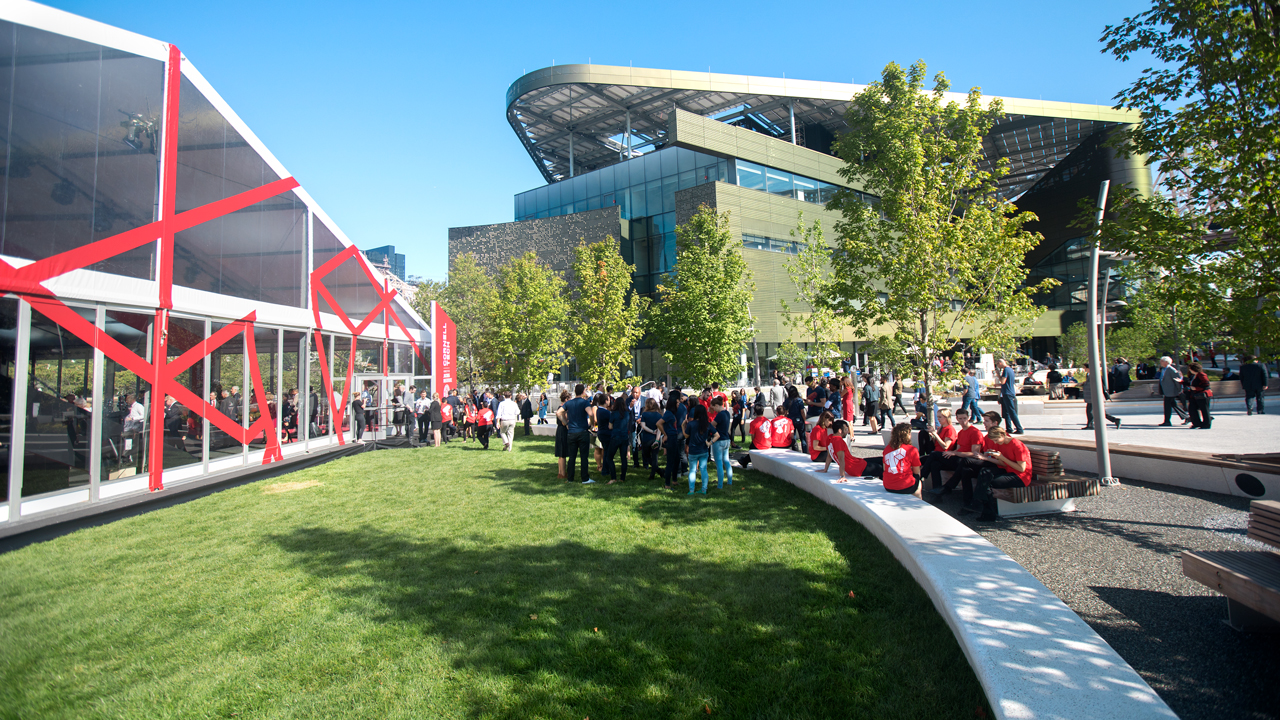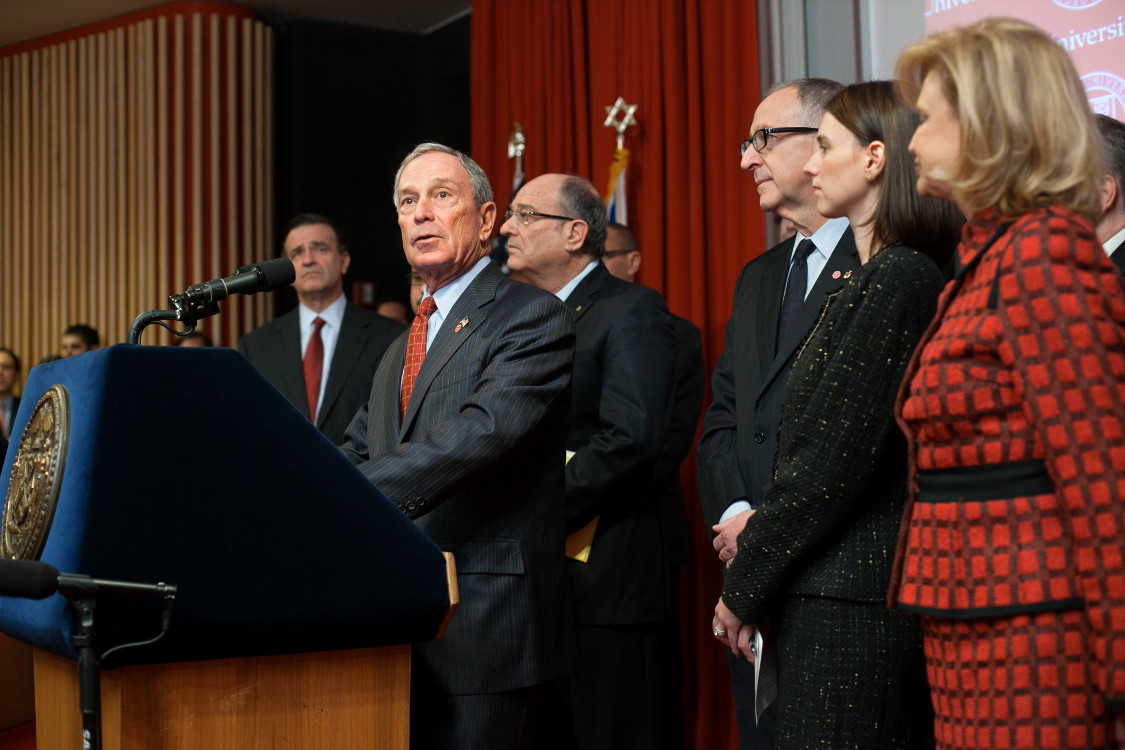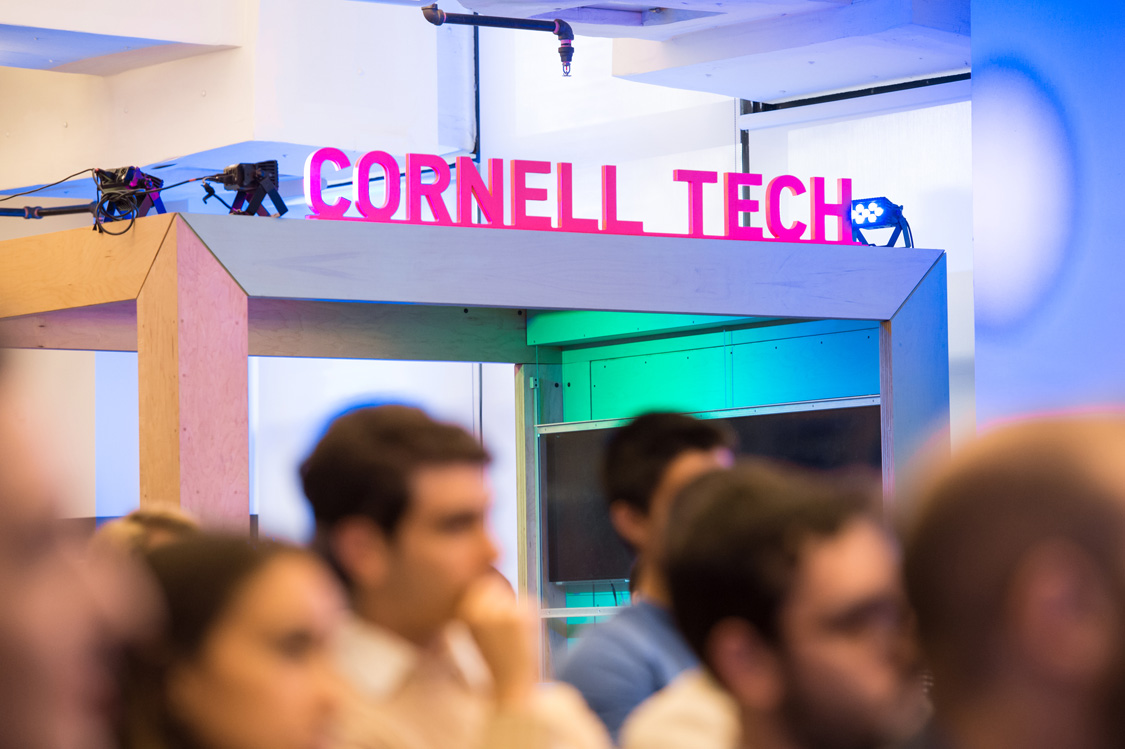
By Tapan Parikh, Associate Professor
Last week I attended Cornell Tech’s star-studded gala opening on Roosevelt Island in New York City — including speeches by governor Andrew Cuomo, mayor Bill De Blasio and former mayor Michael Bloomberg who was instrumental in envisioning this institution and funding some part of it, as well as our very own Dean Dan Huttenlocher, who was instrumental for just about everything else. While there was much discussion of Cornell Tech’s anticipated role in supporting innovation and economic development in the city, as well as building a more diverse and socially aware technology workforce through our graduate and K-12 education programs, I was particularly inspired by how Cornell was often referred to as New York’s land grant university, especially by Cornell University’s President, Martha Pollack, and the Chairman of the Board of Trustees, Robert Harrison.
Land grant universities, established by the Morrill Act of 1862 (signed by Abraham Lincoln), were originally intended to focus on the dissemination of practical technical skills (in that time, focused on agriculture, military tactics and mechanic arts) for working class students in the context of a liberal arts education, as one response to economic development and the resulting changes in class structure and social dynamics. Remembering this history is particularly relevant for Cornell Tech — which was similarly established with a land grant, with the explicit intent of diversifying the city’s economy and making it more resilient in the face of technological and social change.
One important role for land grant universities is in the provision of cooperative extension services, as established by the Smith-Lever Act of 1914. Cooperative extension is, according to Wikipedia, “a non-formal educational program… designed to help people use research-based knowledge to improve their lives”. Historically, cooperative extension has focused on agriculture, but is now also applied in other areas such as urban planning and youth and community development. The idea is that not only can people benefit from better access to expert knowledge and advice, but that research itself might also benefit from being more directly connected to the lives and concerns of the people that it intends to serve.
What could the idea of cooperative extension mean for technology research in general and Cornell Tech specifically— with its location in the heart (well, almost) of New York city? This question is directly relevant for my Fall semester course, ambitiously titled Remaking the City. This service learning course partners teams of Masters students (from across the Information Science, Computer Science, MBA and Operations Research programs), with organizations across Roosevelt Island, to do User Experience (UX) research projects that seek to both provide direct and tangible benefits to each organization and the community that it serves, as well as to create future technology visions that can help guide their strategy and goals with regard to technology.
The list of organizations that we are working with in the first semester of this course is as purposeful as it is diverse and fascinating — including the local garden club, senior center, art gallery, theatre, historical society and physicians’ office, as well as the Roosevelt Island Operating Corporation (aka RIOC)— the administrative entity in charge of all island planning, infrastructure, transportation, land use, etc. Historically, larger-scale organizations and businesses have dominated technology research and adoption, reaping most of the benefits thereof. While there have been some research areas that have tried to focus on the needs of smaller, less-well served organizations and individuals (for example, in the developing world), to my knowledge there has been no systematic effort to study the design, role and implementation of technological solutions in these organizations — including governments, schools, non-profits and businesses.
In our class, the organizations we work with are small (often very small, including being completely volunteer-driven), but deliver essential social, cultural, environmental and economic services to the community. They are also fundamentally constrained in their technology and management capacity, limiting their ability to deliver services effectively and to make them available to more people. What are the core technology challenges facing such organizations? How can technology support furthering their organizational mission? What kinds of shared technology services, infrastructure and products might improve their ability to do so in a sustainable manner? These are just some of the very interesting research questions being raised by the class, and the students within it.
Many students in the class are also motivated by the desire to build personal relationships with the people and places of this beautiful island. This spirit was most evident during the opening reception for the class, held at the RIVAA gallery, where students met community members and potential partners over snacks and drinks. More recently, Judy Berdy of the Roosevelt Island Historical Society led a walking tour of the island during which she was able to share her voluminous knowledge of the island and its history, with the students in rapt attention trying to keep up, physically and intellectually. What was most exciting about both of these events were the new connections being made between technologists, and the organizations, people and places that their technology could serve.
One question that has come up repeatedly during these interactions is the question of sustainability. This is also a question facing the entire technology industry, as pundits and policy makers discuss and debate the impact that technology has on people’s lives and societies. As students build these relationships on the island, they want to make sure that the solutions they envision or build are meaningful and provide lasting value. In ten years of teaching design courses, I have never had a class that was as reflective of its own design practice, and in the sustainability of the solutions and relationships that are being created through it. No doubt this is due to the calibre and commitment of the Cornell Tech student body, as well as the incredible warmth with which they have been received by the Roosevelt Island community, which itself speaks to the incredible work done by people like Jane Swanson, Diane Levitt and Meg Ray in building relationships with the people and organizations of this island. Jane was especially helpful for this class in sourcing the list of organizations that we are working with this semester, and in helping navigate the many meetings and decisions that it took to get this class to happen.
In class, we have discussed several ways of achieving sustainability in our projects. One interesting idea came from a student in the class, Trishala Neeraj. Trish said that what could really sustain these projects are the relationships we are building as technologists, directly with the people and organizations that could benefit from our work. I found this to be a profound and deep statement, and one that brings me back to the idea of cooperative extension. People like Jane, Diane and Meg play an absolutely essential role in making sure that the research that we do here is meaningful and relevant to this city’s people and their lives, through the relationships and partnerships they build with outside organizations and individuals. Students like Trisha are interested not only in becoming better technologists, but also in find ways that directly serve people and communities through the use of technology.
As an institution, what can we do to better support these kinds of students and activities? What if it were not only technology that we embed in the everyday fabric of our social, urban lives, but living, breathing technologists that reside in our communities and directly contribute to the lives and livelihoods of its members? If this were true, could technology increase not only productivity of our economies, but also the resilience of our communities? These are just some of the questions that I hope we can address within the grand experiment that is Cornell Tech.
Media Highlights
Tech Policy Press
Content Moderation, Encryption, and the LawRELATED STORIES

Celebrating 2 Cornell Tech ‘Birthdays’

The Art of Raising Money



